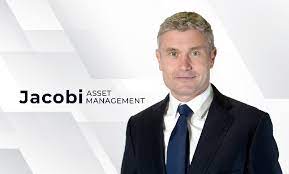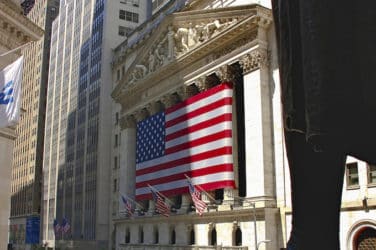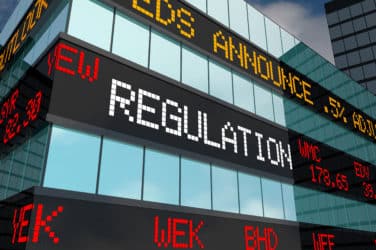

Tyrone Lobban, head of Onyx Digital Assets & Blockchain at JP Morgan, said the bank’s digital asset platform processes between $1bn and $2bn on a daily basis.
He spoke on a panel about increasing institutional involvement in the sector at the CCData Digital Asset Summit on 3 October in London.
Lobban said that 99.9% of conversations with clients relate to tokenization, the process of using blockchain technology to convert an asset or ownership rights of an asset to digital form. Putting assets on chain could revolutionise traditional markets by allowing instant settlement and the ability to rapidly transfer assets, reducing risk and increasing liquidity, especially for illiquid assets such as private markets.
For example, Onyx Digital Assets has tokenized US treasury bonds, mortgage-backed securities and cash in the form of JPM Coin. External clients such as Goldman Sachs and BNP Paribas each have their own node and can access tokenized intra-day repos.
Clients can access intraday liquidity through a secured repo transaction using tokenized collateral, rather than having to draw down a more expensive unsecured credit line on an overnight basis, which becomes even more important as interest rates rise.
“For example, a client may want to borrow $1bn for three hours and we can use smart contracts to automate delivery versus payment at the right times using precise terms,” Lobban added. “There is no middle or back office processing.”
He continued that almost every financial institution has plans for tokenizing traditional financial assets.
“If you look at the scale of traditional securities versus crypto, that is where the opportunity lies,” he added.
Lobban also recently spoke to the Empire podcast at Blockworks. He described Onyx as a business unit of about 275 people within JP Morgan’s corporate and investment bank, but that works across the firm with other businesses such as the retail bank and asset and wealth management.
The business has four stripes – Link, focused on information flows and around cross border payments; Coin Systems which is a value transfer business; Onyx Digital Assets platform for tokenizing traditional financial assets; and finally, Blockchain Launch which is related to Web3 innovations that are relevant for a bank.
The bank started a blockchain group in 2015 with a handful of people to think about how blockchain could be beneficial or disruptive to JP Morgan.
Lobban said: “Through that, we embarked on a whole program of experimentation to see whether the new technology could create real value or completely change the way things are done in different areas of finance.”
Since launching, the team has carried out between 70 to 90 proofs of concepts. In 2020 the bank decided that it had enough proof points to see that the technology would be meaningful for the bank and that it needed to set up a business unit.
Onyx’s work is currently centred on permissioned blockchains.
Lobban said: “We haven’t fully shifted to public blockchains but we have been very deliberate about ensuring that we have the public blockchain nexus as a very strong strategy. Since the FTX debacle at the end of last year, that has become somewhat challenging from a regulatory perspective.”
Onyx’s work assumes a future state where banks can be more focused on public blockchains but that requires regulatory approval, focus on privacy, know your customer and anti-money laundering requirements, and requirements of scale to be developed.
Lobban said that one of the reasons why JP Morgan is different to almost any other traditional finance player globally, and has been able to make so much progress, is because the business has had sponsorship from the top.
“Jamie Dimon [chairman and chief executive] himself has been championing Onyx and the business has been created through support from him and Daniel Pinto [President and Chief Operating Officer],” added Lobban. “That has given us the ability to have early stage experimentation and transform that into generating revenue for the bank and our clients, and also get cost savings.”
One of the areas that Onyx focuses on is security settlement and the complex post-trade activity needed to transfer ownership, where blockchain technology can have a huge impact. In addition, Laddon believes Web3 developments related to identity and DeFi can impact traditional finance.
The Onyx Digital Assets platform has global broker-dealers such as Goldman Sachs, BNP Paribas and DBS, as well as large asset managers, as clients.
Lobban added: “Our strategy is being able to do this for the industry and with the industry.”
He gave the example of Blackrock, as the asset manager is looking to tokenize money market fund shares through the platform, which allows customers to use the shares in new ways.
Since launching Onyx Digital Assets in 2020, the platform has processed almost $900bn of digital assets. He estimated that intra-day repos using tokenized collateral will save the markets business about $20m a year.
“It is not massive in the grand scheme of things, but it’s not immaterial either,” he added. “We can build out further use cases and expand into other asset types.”
In the first half of this year Onyx Digital Assets has processed as much as during the whole of 2002 through onboarding more clients, and also clients seeing more value and using the platform more frequently.
“I think we are going to see volume double through next year so the trajectory is fairly strong,” he added.
However, volumes are still small compared to the bank’s traditional payments flows where it processes $10 trillion each day.
“The buy-in for the potential of the technology has increased over the past few years because we have got more confident on how to implement it,” Labbon added. “We are not talking about pilots but products that are fully integrated into our regular banking systems. We have blockchain connected to our core infrastructure.”
Spot crypto ETFs
Another theme at the CCData Digital Asset Summit was the wait for the US Securities and Exchange Commission to approve a spot bitcoin exchange-traded fund.
The SEC has permitted bitcoin futures ETFs, and has so far rejected all the applications for spot bitcoin ETFs. Ether futures ETFS were recently approved and started trading on 2 October 2023.
Ether futures ETFs starting see some flows, not a ton, but it's something, +$15.6m with VanEck in an early lead over ProShares.. pic.twitter.com/e0bu7T0ZLT
— Eric Balchunas (@EricBalchunas) October 4, 2023
In July this year five bitcoin ETF applications from BlackRock, Fidelity, Invesco Galaxy, VanEck and WisdomTree were published in the Federal Register, which sets a timeline for the SEC to review the proposals.
Steven Schoenfeld, chief executive of Marketvector Indexes, said at the conference that the SEC has asked for comments on spot bitcoin ETFs, rather than rejecting them straight away, which suggests a marginal improvement in dialogue. He continued that this was also due to Grayscale Investments winning its lawsuit challenging the decision by the SEC to deny conversion of Grayscale Bitcoin Trust to an ETF.
“Approval of a spot bitcoin ETF would bring in flows of $150bn to $200bn over three years,” added Schoenfeld. “Yield crypto products and structured products will blossom.”
Martin Bednall, chief executive at Jacobi Asset Management, said at the conference that the SEC is likely to approve all the applications for spot bitcoin ETFs at the same time.
“I have never seen as much anticipation for an ETF launch,” Bednall added. “The mood music has changed since the Grayscale case and Blackrock is also close to global regulators.”
On 15 August 2023 Jacobi listed Europe’s first spot Bitcoin ETF. The fund manager said the Jacobi FT Wilshire Bitcoin ETF represents the first digital asset fund compliant with SFDR Article 8 through its decarbonisation strategy. Jacobi will look to offer other single coin ETFs and then multi-coins, and has partnered with Wilshire Indexes, who are providing the benchmark for the first ETF, to develop future products.
Crypto derivatives
An additional theme at the CCData Digital Asset Summit was the use of crypto derivatives by institutions.
Payal Shah, equity and cryptocurrency product development at CME Group, said on a panel that the regulated exchange had experienced a flight to quality after the collapse of FTX.
“We have more than 110 Large OI (Open interest) holders of bitcoin contracts, and more than 430 across our crypto suite,” she added.
In addition, investors who first started trading crypto derivatives at CME have also started trading other asset classes e.g. gold derivatives.
Shah continued that more than 50% of volume comes from outside the US so the CME wants to introduce local offerings for risk management, such as in Asia Pacific.
John Palmer, president of Cboe Digital, said on the panel that there has been a shift in institutional interest towards margin-based futures.
“Institutions want more regulated venues and we want to grow the pie,” he said.
In June Cboe Clear Digital said it has received approval from the Commodity Futures Trading Commission to expand its product offering to include margined futures contracts and become the first U.S. regulated crypto native exchange and clearinghouse combination platform to offer leveraged derivatives products.
To date Cboe Digital has offered trading and clearing of Bitcoin and Ether futures on a fully collateralized basis, which require customers to outlay the full amount of a futures contract upfront. The new margin model will require only a percentage of the total to be posted as collateral.
In addition to margin futures, Cboe Digital’s spot market supports trading in Bitcoin, Bitcoin Cash, Ether, Litecoin and USDC.











